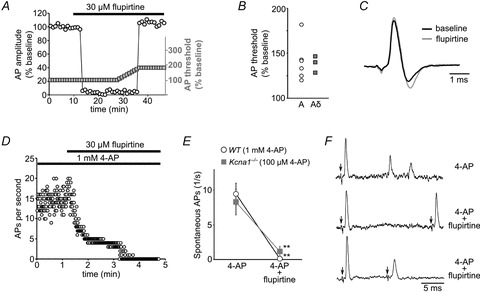Figure 7. Flupirtine rescues 4-AP induced hyperexcitability in single vagal axons.

A, when we administered 30 μm flupirtine to wild-type A-axons to activate nodal KCNQ channels, we observed an increase in AP firing threshold that caused stimulation-evoked APs (left Y-axis, open circles) to disappear until the stimulation intensity was increased sufficiently to reach the new firing threshold (right Y-axis, grey boxes). B, flupirtine (30 μm) increased the AP firing threshold by about 25–50% in both wild-type A- and Aδ-axons. C, flupirtine increased the hyperpolarization overshoot phase of the AP waveform indicative of an increase in inward K+ current. D, raw data showing the elimination of 4-AP-induced spontaneous activity in a wild-type A-axon by application of flupirtine. E, flupirtine-mediated KCNQ channel activation suppressed 4-AP induced spontaneous activity in wild-type A-axons completely (n = 6) and in Kv1.1-deficient A-axons by 85% (n = 6). Values expressed as means ± SEM. **P < 0.001 using two-tailed, paired t test. F, flupirtine failed to rescue the 4-AP-induced prolongation of refractory period in wild-type A-axons. The top trace shows smaller partial spikes following a stimulation-evoked AP in the presence of 1 mm 4-AP. With the addition of flupirtine (middle trace), paired stimulation evokes a full-size action potential when the interstimulus interval is long (∼20 ms), but at shorter intervals (∼10 ms; bottom trace), the second response triggers only a lower amplitude impulse. Compare to Fig. 3B and D which shows that A-axons normally only require about 5 ms for recovery at baseline and about 10 ms in the presence of 1 mm 4-AP.
